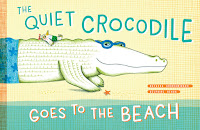In Be Prepared, all Vera wants to do is fit in—but that’s not easy for a Russian girl in the suburbs. Her friends live in fancy houses and their parents can afford to send them to the best summer camps. Vera’s single mother can’t afford that sort of luxury, but there's one summer camp in her price range—Russian summer camp.
Vera is sure she's found the one place she can fit in, but camp is far from what she imagined. And nothing could prepare her for all the "cool girl" drama, endless Russian history lessons, and outhouses straight out of nightmares!
When young Vera’s attempts to make friends with girls from her suburban school go embarrassingly (and hilariously, in retrospect) awry, she decides that Russian summer camp is the answer to her problems. Surely there she will fit in and find people who will appreciate her! But it turns out that at camp Vera has just exchanged one miserable experience for another – and the camp doesn’t have running water!
Brosgol’s camp story chronicles experiences that will be familiar and/or recognizable to all – feeling different or excluded, wanting to fit in, and having a “thing” or experience built up so much in your head that turns out to be not-so-great after all. Brosgol treats her past self with grace and humor, drawing laughs out of her audience as she remains true to past events, hurts, and relationships.
Be Prepared is a dose of reality – the kind that will make you tear up in sympathy for young Vera’s plight and feelings, laugh at an unexpected turn of events, and at the end, sigh with contentment. It’s a story well-told, and beautifully illustrated. It’s a perfect summertime read for the tween set, and adult readers will find much to sympathize with as well. Brosgol’s art, dialogue, and pacing all combine to create a book that you won’t want to put down, and will want to put in others’ hands ASAP as soon as you’re done.
A good portion of the hilarity in Be Prepared comes from Brosgol’s depiction of her younger self – especially her eyes. They’re almost as big as her face, surrounded by glasses, and intensely expressive – here you can see all of Vera’s anxiety, worry, and disappointment laid bare. Brosgol imbues her art with emotion, and the reader feels it. The page spreads illustrated in shades of olive green, black and white will appeal to fans of cartoons and animation, and though panel sizes vary, the focus is nearly always Vera and her reactions to various experiences.
Be Prepared is a summer camp memoir that’s perfect for fans of Lucy Knisley’s Relish and Shannon Hale’s Real Friends, and any graphic novel fan who is ready for a story filled with humor and heart!
Recommended for: graphic novel readers ages 8+ who enjoy the work of Shannon Hale and Raina Telgemeier, and anyone who went to camp or wanted to go – and found it different than they expected!
Fine print: I received a finished copy of this book from the publisher for Cybils Award consideration. I did not receive any compensation for this post.




















